Friends and grove members are welcomed into a candlelit home, and with the fire in the hearth blazing. Each person brings a dish to share–steaming piles of local foods in season: a beautiful roast beef, pumpkin soup, sourdough bread, baked squash, stewed greens. After everyone settles in and dresses in their ritual robes, a sacred grove is opened. Each participant calls their ancestors to the space that they wish to honor and commune with. In silence, then, participants prepare two plates–a larger plate for themselves and a smaller plate for their ancestors. The silence descends upon the table and deepens as each druid communes in silence with the ancestors of the land, of their blood, of their tradition, and of their craft. The air feels heavy with the presence of so many spirits. As the meal concludes, participants take a candle and walk out in the dark to leave their ancestor offering outdoors and light the path for their ancestors to return across the veil. They also take a moment to visit the ancestors of the land shrine and leave an offering. The community gathers once again inside. Ogham are cast and oracle cards are drawn to offer additional guidance from the ancestors. They grove closes the space. Merriment ensures.
What I just described is one of many versions of a “dumb supper” that we druids use to observe Samhain, to honor and commune with the ancestors, and commune with our groves and friends. It was recently pointed out to me that “dumb” supper isn’t nice towards persons with limited hearing or deafness, so I will use “silent supper” in this post. Like everything else, we druids have our own way of doing things, and thus, I’ll share this wonderful ritual in honor of Samhain. I also encourage you to check out my other Samhain posts for more inspiration: Release at Samhain, honoring the three kinds of ancestors, Rosemary and the Ancestors at Samhain, the Samhain of our lives, and building a 7-circuit labyrinth at Samhain.
Preparation for the Silent Supper
In order to have an effective dumb supper meal, you want to plan carefully in advance. If you are inviting others or doing this as a grove or circle, it is likewise important to work with everyone in advance to ensure that the ritual goes smoothly. Here are the various considerations:
Crafting a Ritual Meal
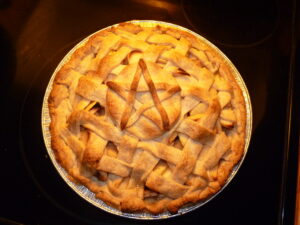
The Silent Supper is essentially a silent ritual meal, so thinking carefully about the “meal” part is an important part of the ceremony planning. Ritual meals can be particularly meaningful if they are created with meaningful foods. For Samhain rituals, this is often the end of the harvest season, when the trees are dropping their fat nuts, the squashes and pumpkins are rolling in, and people are starting to crave the stews, soups, and comfort foods of the winter months. Given this, I suggest crafting a ritual meal that really takes advantage of the local produce of the season and features local and regional cuisine. Not only does eating local help you tread lightly upon the land, it also helps you connect to the ancestry and heritage of your local region.
If you have a particular ancestor that you want to honor, creating special family foods is another possibility here–in fact, if you are doing this as a group, one take on this tradition is to ask each person to bring a dish that was important to one or more of their ancestors or is tied with their own ancestral culture. This ancestor potluck can create an incredible meal with extra stories for each person to share.
Yet another way to handle the meal is for the group, or some members of the group, to cook together. The key here is to think about how to create a meaningful meal that is delicious and honors the land and the ancestors.
You can also think about creative approaches to how your foods look–decorations, style, etc. This is definitely a time to make a fancy, special, and beautiful meal.
Setting the Stage
The second consideration is how you will set up the scene and how the meal will take place. You will want to figure out how the ritual will be structured, how the stage will be set, and how people will get their food.
In terms of the scenery, I suggest that eating this meal by candlelight is particularly powerful and meaningful. The table itself is the altar for this meal and can be set up not only with candles but also elemental representations and decorations of the season.
You will also want to think about the plating. To maintain silence, the best thing to do is to limit the amount of communication necessary to progress the meal; and one thing that takes a lot of communication is passing plates. Thus, having all food that participants can plate for themselves before sitting down or pre-plating the food are better options for the dumb supper.
Most versions of the dumb supper allow participants to either collectively build an ancestor plate or each have their own ancestor plate. The ancestor plate is a smaller plate with a tiny portion of each of the dishes. The ancestors spiritually “eat” off the plate as they are called and communed with during the meal. Afterward, the food on the plate is taken outside, composted, or offered to wildlife.
Setting Expectations: Holding Space, Cultivating Silence, and Communing with the Ancestors
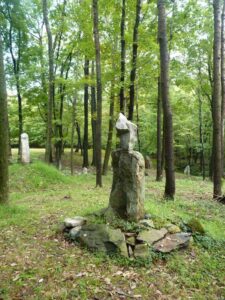
The Silent Supper can be done in a group or individually–and both have their benefits. If you are inviting others, the critical thing is that all attendees have a clear sense of what the ritual is about and the expectations of silence for this ritual. It should be explicitly communicated in advance as well as at the start of the ritual. It is very unfortunate when you’ve put so much work into a ritual meal and someone does not respect the ritual silence as part of it. I have had this happen and it has essentially ruined the ritual. Individuals must be prepared to eat in silence and hold that space.
Thus, this meal is based on the idea that each individual will commune in silence with the ancestors. It is helpful to have a very clear conversation with everyone about the nature of the ritual in advance and clarify it before the ritual begins. When the ritual begins, you should have a clear way to signal the beginning and end of silence (a bell, chime, or singing bowl is really useful for this).
The silence in this ritual is long and it can be heavy. It often gets deeper and more intense as the ancestors arrive and as the meal progresses. I think its important that people understand this and know what to expect. Even talking about the general length of time for silence (e.g 10 or 15 minutes) is a good way to make sure everyone is on the same page.
The other thing that may need clarification before the ritual is the kinds of ancestors people want to honor and call. Usually, druids recognize three or even four kinds of ancestors: ancestors of the blood, ancestors of the land, and ancestors of the tradition (these three are described more in this post). I also like to honor my ancestors of craft. Participants may want to give some consideration to which ancestors or groups of ancestors they will call.
One sticky point here for those of us who are white with colonial legacy in North America is whether or not to honor all ancestors at this meal. This is something good to talk about with the group who is participating to see what the group wants to do, what other work has been previously done, and messages from the spirits. Typically, I do not honor the ancestors of the land at this meal, but rather, I have other ceremonies that I do to honor them specifically. Where I live, some of the ancestors of the land are extinct, and thus those ancestors of the land–who I very much want to honor–do not want to be called into the same space as individuals who participated in their genocide. To honor the ancestors of the land, I’ve done a few different things: I maintain a shrine on the land to honor the ancestors of the land that I tend regularly. For this meal, I make them their own plate and take it out as an offering, which I take to them after the main ceremony. Another option is to honor them in their own ritual. I think the important thing is that you feel this out and decide how to proceed based on your specific context.
The Ritual
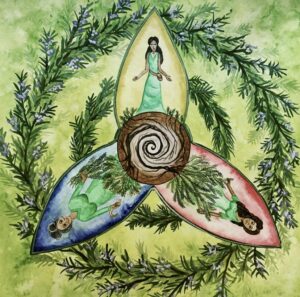
What I will offer here is just one version of many–the key elements are the meal, the silent communing of the ancestors, and the breaking of bread. You can adapt this ritual and add whatever else you like for your own purposes or the purposes of your grove.
The host sets the table and sets the scene of the ritual–candles, a large and small plate for each table setting, and a fire in the hearth.
Participants arrive to candlelight and soft music. They set down their dishes and prepare by changing into their ritual clothing.
As a group, they form a circle around the table, holding hands. Sacred space is opened, calling the seven directions and invoking a sphere of protection around the home and broader land (which participants will venture out into at the end of the ritual). Each participant shares the dish that they made and the ancestor it connects to. A singing bowl signals the start of the silent dumb supper.
Participants get their plates from the table and prepare both their own meal and their ancestor plate. They sit down in silence, calling to whatever ancestors they have chosen to commune with. The meal remains silent until everyone has cleared their plates and had some additional time to be present.
The singing bowl is once again chimed. Participants take a candle and put on their shoes to leave their ancestor plate outside for the evening–wildlife and the spirits can finish off the meal.
Participants gather back inside and each draws three oracle cards as a final message from the ancestors. The cards are interpreted by the group or individually.
The sacred grove is closed. Anyone who wants seconds gets them, and then the meal is cleaned up and merriment ensures.
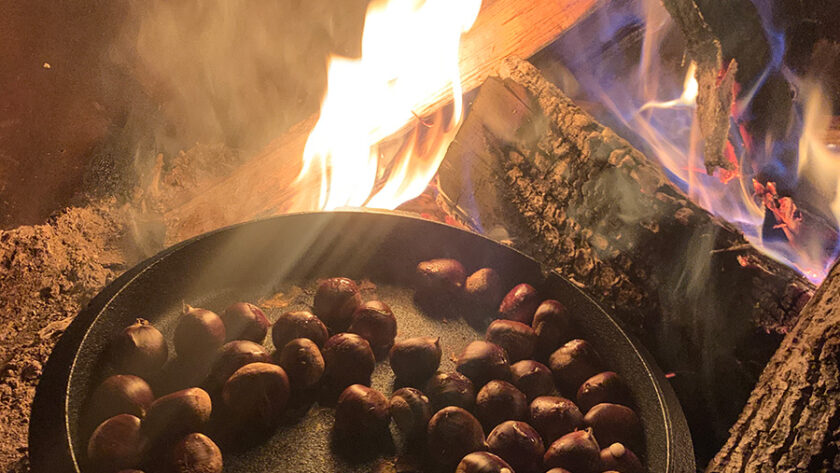
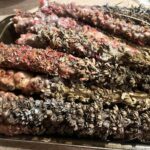
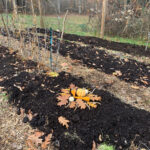

I see quite some similarities here to mine. (even more reason to get aquainted to the druid society) The only difference being that we celebrate iit with direct family members – given food to the ancestors. Am;of afro descent living in Europe for about 20 years now. But i somehow have to get something created in my own solituary way from what i have gotten here, Dana. Thanks.
Hi Dav, thanks for sharing! I’d love to hear more about your specific ceremony!
That sounds lovely! I will be doing a Silent Supper for Samhuinn this year. Thank you for the instructions.
You are welcome! Nice to hear from you, Max, and I hope you are doing well :).
I like the account, with roast beef and concluding merriment. What does it mean, beer and wines in a restrained type of orgy?
Merriment is not an orgy. Its just a chance to build and share in community, share stories, enjoy a fire, maybe tell some stories or share a song.
Hmm. I would swear I made a comment about how “dumb” doesn’t mean “unable to hear”; it means “unable to speak.” Thus it’s not offensive to hearing-impaired people, although these days it’s generally used to mean “stupid” so may not be the best term to use for a meal eaten without speaking. But the comment’s not here. Let’s see if this one goes through.
Hi Karen, thanks for the comment! I didn’t even think about the term originally, recently, a friend who has partial deafness told me that the term “dumb supper” was offensive to those who struggled with hearing and speaking disabilities, so that’s why I changed it.